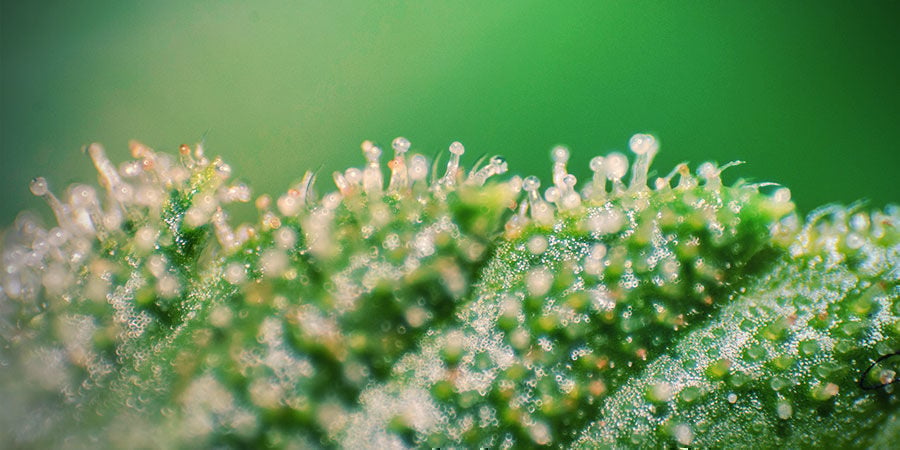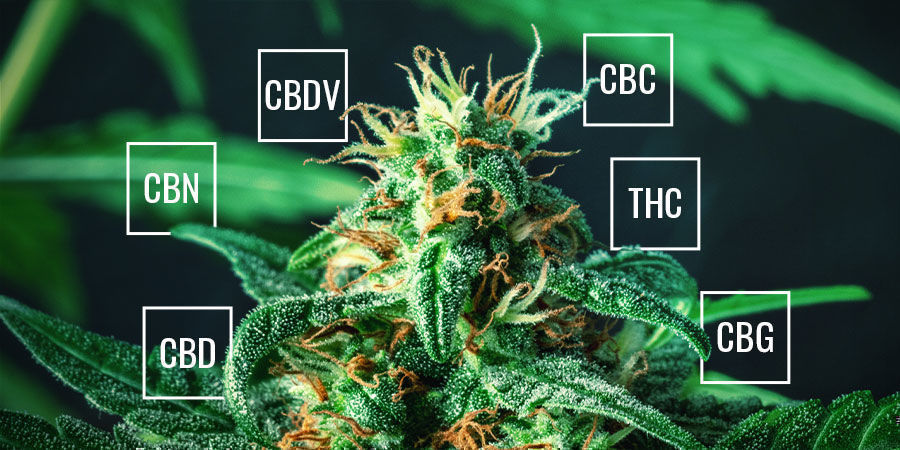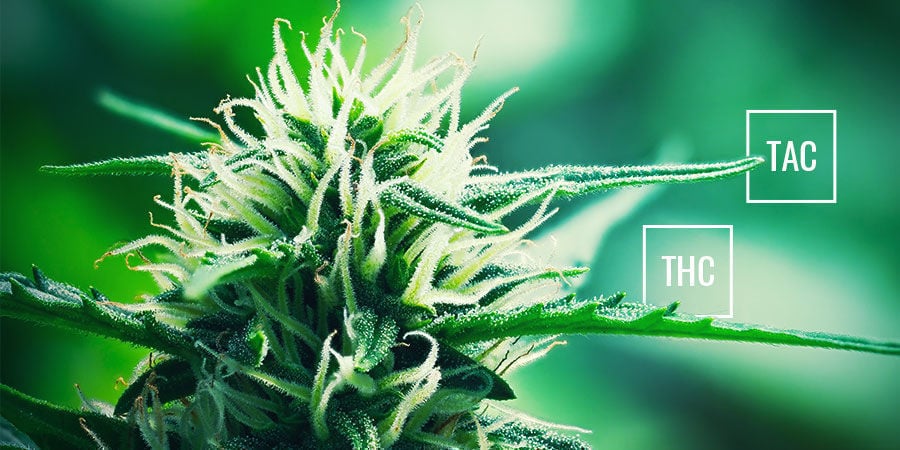
What Is TAC And Why Is It Important?
As cannabis legislation relaxes across the world, we're finding out more about what this versatile herb has to offer. The TAC (total active cannabinoids) of a strain provides greater insight into the overall cannabinoid content of the plant, thereby making it possible for users to fine-tune their cannabis experience.
With more attention being directed toward cannabinoids other than THC, it’s understandable that cannabis users would want to know the full extent of the cannabinoids present in their strains.
Lucky for some, in regions with established cannabis markets, this is indeed the case. Instead of simply displaying THC content, each strain features a breakdown of total active cannabinoids (TAC), allowing users to decide exactly what kind of smoke they want to experience.
What is total active cannabinoids (TAC)?

Total active cannabinoids is just that; a figure that represents the full array of cannabinoids present in any given strain of cannabis. In practice, TAC only includes cannabinoids detectable by current testing methods, so it is likely that even more are present too. The “active” refers to the fact that they will, in some way, influence the effects of said strain, even if we don’t know the exact mechanisms of each cannabinoid yet.
TAC and the Entourage Effect
Why is TAC important? It has to do with the entourage effect. This theory posits that cannabis chemicals synergise in the presence of one another, achieving something greater than the sum of their parts. For instance, while THC and CBD alone have unique effects, when consumed together, they produce any number of different physiological experiences.
TAC essentially aims to give some indication of what this entourage effect may be. For those who consider themselves medical cannabis users, TAC becomes even more important. For the recreational smoker, it allows them to better tailor their high.
Total active cannabinoids vs total aerobic count

Within the cannabis industry, there is also something known as total aerobic count—"TAC". However, this term should not be mistaken for total active cannabinoids. Total aerobic count describes a measure by which the microbial count of a sample of cannabis is determined.
This process is fairly unenlightening, though, as it doesn’t by itself determine the sort of bacteria present. For example, many growers use Bacillus subtilis, a bacteria that acts as an organic fungicide, to protect their plants. This could result in a high total aerobic count, without actually suggesting the presence of any pathogens. Likewise, a low count does not rule out the presence of dangerous bacteria.
Which cannabinoids are present in weed?

So, if you’re lucky enough to source weed that comes with an accurate TAC label, what cannabinoids are you likely to see listed? There are at least 113 known cannabinoids in cannabis, few of which are well understood. However, most of these will not appear on a TAC label. Below are the most common features you'll come across.
THC
This, of course, is the big one. Δ-9-Tetrahydrocannabinol (THC) is the dominant cannabinoid in most strains of cannabis, and the one responsible for the high. It interacts mainly with CB1 receptors in the human body by mimicking anandamide (one of the body's own endocannabinoids), which also binds with these receptors. THC, however, is much stronger and more difficult for the body to break down—hence the high.
CBD
Cannabidiol (CBD) is the second most abundant cannabinoid in cannabis, and the second most famous. In recent years, interest in CBD has blossomed, and for good reason. Whereas THC interacts directly with cannabinoid receptors, CBD takes a more indirect route. It inhibits FAAH, an enzyme responsible for breaking down anandamide, thereby increasing the concentration of this “bliss molecule” in the body. This is why it doesn’t cause a high, as such, but still has potentially powerful effects.
CBC
Cannabichromene is a little-known and poorly understood cannabinoid. Exactly what role it plays is unclear. What we do know, though, is that it seems to have a stronger affinity with CB2 receptors, whereas THC binds more readily with CB1 receptors. What does this mean? While the answer as yet eludes us, it is suspected that via the entourage effect, CBC’s presence in cannabis may increase its potential for holistic efficacy.
CBG and CBGA
Cannabigerolic acid (CBGA) is the first cannabinoid to appear in the cannabis plant, and it is from this that others are derived, including CBG.
Though the current body of research into these compounds is minimal, researchers are finally starting to determine the potential of CBG and CBGA. Alongside interacting with the body’s endocannabinoid system, CBG appears to have unique interactions with α-2 adrenoceptors and 5-hydroxytryptamine receptors. It is too early to say what the implications of these interactions are, but it opens the door to intriguing new research.
CBDV
Cannabidivarin is only found in trace amounts in cultivated strains of cannabis. However, it is more abundant in wild indicas found in Central Asia. Exactly what interaction it has with the body is still fairly vague, but due to its similar chemical structure to CBD, it is suspected to have similar effects.
Other compounds in cannabis

Though cannabinoids are the compounds displayed in a TAC count, you will also find terpenes, flavonoids, and even fatty acids of note in cannabis too. While for the most part these compounds are even more poorly understood than cannabinoids, it is thought that they may well play a role in the entourage effect.
Terpenes
Terpenes are the chemicals in cannabis that give it its distinctive and pungent flavours. But terpenes are by no means limited to the cannabis plant. In fact, most plants produce them. Ever wondered why the smell of OG Kush is so similar to that of a pine forest? Because they both feature the same terpene in abundance—pinene!
The terpenes found in cannabis are present across nature, which is why cannabis exhibits so many aromas that can be described in terms of flowers, fruit, and more. For many years, it was assumed that terpenes only imparted smells to the cannabis experience; any physiological effects were attributed to the power of scent.
However, we now know that terpenes can interact with the body in ways that influence the effects of cannabinoids and the endocannabinoid system at large. For instance, myrcene (which has a musky, spicy taste) helps THC cross the blood–brain barrier faster, resulting in a faster onset of effects.
Some notable cannabis terpenes are:
-
Pinene—creates pine-like scents and flavours
-
Linalool—a soothing scent also present in lavender
-
Limonene—gives cannabis that famous citric tang
-
Eucalyptol—gives eucalyptus its distinctive smell
Flavonoids
Flavonoids usually play the role of pigments in plants. It is known that they can exhibit antioxidant effects when consumed. Exactly what role they play in cannabis is obscure, though. This is because cannabis is largely vaped or smoked, and it is not known whether flavonoids survive this process, or whether they can be absorbed via the lungs.
Fatty Acids
Fatty acids in cannabis are poorly understood. But they have been shown to potentiate the endocannabinoid 2-AG’s binding affinity with CB1 and CB2 receptors under certain conditions. Whether these findings can be generalised to normal cannabis consumption is currently unclear. Nevertheless, their potential to influence the entourage effect certainly warrants further attention.
THC vs TAC

Here’s the hard and fast difference between these two acronyms: THC is a phytocannabinoid, whereas TAC is a measure of the overall concentration of cannabinoids in a sample of cannabis. If THC is present in a given strain, it will indeed be included in the TAC declaration.
Know your TAC

As you can see, knowing the TAC value of your cannabis can be extremely useful if you want to tailor your experience. Of course, this comes with the caveat that we don’t actually understand what many of the cannabinoids do. But that’s not to say that you can’t experiment with different ratios to figure out which concentrations of certain cannabinoids suit you best.
For medical cannabis users, knowing the TAC is more than just a matter of experiencing the best high. For now, the mechanisms by which cannabinoids may or may not affect certain disorders are little understood. This is changing, though; and as we gain a greater understanding of the uses of specific cannabinoids, TAC could become an increasingly profound measurement in cannabis-derived therapeutics.
- Ben-Shabat S, Fride E, Sheskin T, Tamiri T, Rhee MH, Vogel Z, Bisogno T, De Petrocellis L, Di Marzo V, & Mechoulam R. (07/17/1998). Ben-Shabat S, Fride E, Sheskin T, et al. An entourage effect: inactive endogenous fatty acid glycerol esters enhance 2-arachidonoyl-glycerol cannabinoid activity. Eur J Pharmacol. 1998;353(1):23-31. doi:10.1016/s0014-2999(98)00392-6 - https://pubmed.ncbi.nlm.nih.gov
- Nachnani R, Raup-Konsavage WM, & Vrana KE. (2021 Feb). Nachnani R, Raup-Konsavage WM, Vrana KE. The Pharmacological Case for Cannabigerol. J Pharmacol Exp Ther. 2021;376(2):204-212. doi:10.1124/jpet.120.000340 - https://pubmed.ncbi.nlm.nih.gov
- Udoh M, Santiago M, Devenish S, McGregor IS, & Connor M. (2019 Dec). Udoh M, Santiago M, Devenish S, McGregor I, Connor M. Cannabichromene is a cannabinoid CB 2 receptor agonist. Br J Pharmacol. 2019;176(23):4537-4547. doi:10.1111/bph.14815 - https://pubmed.ncbi.nlm.nih.gov
-
 6 min
April 29, 2024
Synthetic Vs Natural Cannabis: What’s The Difference?
There are three kinds of cannabinoids: those produced by the body, those produced by plants, and those produced in a lab. Many of the latter, known as synthetic cannabinoids, can be extremely...
6 min
April 29, 2024
Synthetic Vs Natural Cannabis: What’s The Difference?
There are three kinds of cannabinoids: those produced by the body, those produced by plants, and those produced in a lab. Many of the latter, known as synthetic cannabinoids, can be extremely...
-
 7 min
February 15, 2022
What Is The Endocannabinoid System?
The endocannabinoid system is a fascinating network of channels and receptors that spans the length and breadth of the human body. Involved in everything from cognition and learning to appetite and...
7 min
February 15, 2022
What Is The Endocannabinoid System?
The endocannabinoid system is a fascinating network of channels and receptors that spans the length and breadth of the human body. Involved in everything from cognition and learning to appetite and...
-
 2 min
June 13, 2019
CBD, THC & CBG - Exploring Cannabinoids
Cannabis contains over 480 active compounds, 80 of which are only found in cannabis. This is a lot of different variables that affect the body, and it partly why there is always new scientific...
2 min
June 13, 2019
CBD, THC & CBG - Exploring Cannabinoids
Cannabis contains over 480 active compounds, 80 of which are only found in cannabis. This is a lot of different variables that affect the body, and it partly why there is always new scientific...
-
 4 min
June 13, 2019
Everything You Need To Know About THC
THC—this simple molecule inspires millions of people to grow cannabis every year. But what exactly is THC? And why do people love it so much?
4 min
June 13, 2019
Everything You Need To Know About THC
THC—this simple molecule inspires millions of people to grow cannabis every year. But what exactly is THC? And why do people love it so much?





 United States
United States










